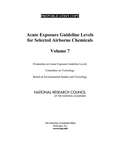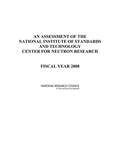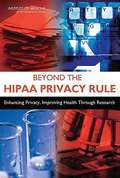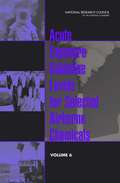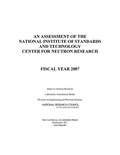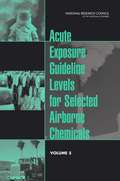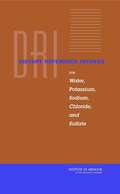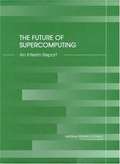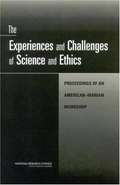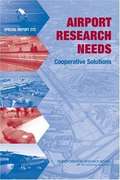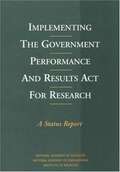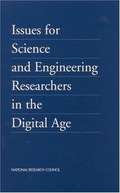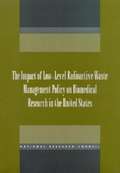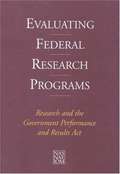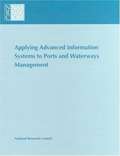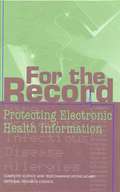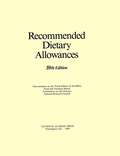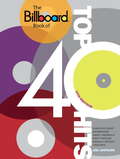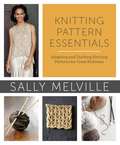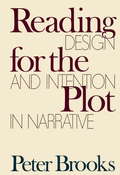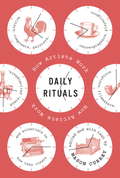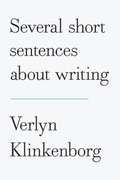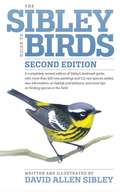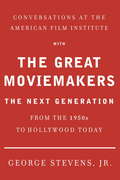- Table View
- List View
Acute Exposure Guideline Levels for Selected Airborne Chemicals: Volume 7
by National Research Council of the National AcademiesThis book is the seventh volume in the series Acute Exposure Guideline Levels for Selected Airborne Chemicals, and includes AEGLs for acetone cyanohydrin, carbon disulfide, monochloroacetic acid, and phenol. <P><P>At the request of the Department of Defense, the National Research Council has reviewed the relevant scientific literature compiled by an expert panel and established Acute Exposure Guideline Levels (AEGLs) for 12 new chemicals. AEGLs represent exposure levels below which adverse health effects are not likely to occur and are useful in responding to emergencies such as accidental or intentional chemical releases in the community, the workplace, transportation, the military, and for the remediation of contaminated sites. Three AEGLs are approved for each chemical, representing exposure levels that result in: 1) notable but reversible discomfort; 2) long-lasting health effects; and 3) life-threatening health impacts.
An Assessment Of The National Institute Of Standards And Technology Center For Neutron Research: Fiscal Year 2008
by National Research Council of the National AcademiesThe National Institute of Standards and Technology [NIST] Center for Neutron Research (NCNR) is a national user facility whose mission is to ensure the availability of neutron measurement capabilities in order to meet the needs of U.S. researchers from industry, academia, and government agencies. <P><P> A panel of experts from the National Research Council evaluated the NCNR by the following criteria: (1) the technical merit of the current laboratory programs relative to the current state of the art worldwide; (2) the adequacy of the laboratory facilities, equipment, and human resources, as they affect the quality of the laboratory technical programs; and (3) the degree to which the laboratory programs in measurement science and standards achieve their stated objectives and desired impact. This book finds that NCNR is an extremely reliable and comprehensive neutron scattering facility. Even as the other neutron source in the nation-the Spallation Neutron Source (SNS)-becomes increasingly operational and the Oak Ridge High Flux Isotope Reactor (HFIR) comes back online, the NCNR will continue to be a vital resource for meeting the broad spectrum of user needs for and scientific objectives related to neutron scattering.
Beyond the HIPAA Privacy Rule: Enhancing Privacy, Improving Health Through Research
by Institute of MedicineIn the realm of health care, privacy protections are needed to preserve patients' dignity and prevent possible harms. Ten years ago, to address these concerns as well as set guidelines for ethical health research, Congress called for a set of federal standards now known as the HIPAA Privacy Rule. In its 2009 report, Beyond the HIPAA Privacy Rule: Enhancing Privacy, Improving Health Through Research, the Institute of Medicine's Committee on Health Research and the Privacy of Health Information concludes that the HIPAA Privacy Rule does not protect privacy as well as it should, and that it impedes important health research.
Acute Exposure Guideline Levels for Selected Airborne Chemicals: VOLUME 6
by National Research Council of the National AcademiesThis book is the sixth volume in the series Acute Exposure Guideline Levels for Selected Airborne Chemicals, and includes AEGLs for chemicals such as ammonia, nickel carbonyl and phosphine, among others.<P><P> At the request of the Department of Defense, the National Research Council has reviewed the relevant scientific literature compiled by an expert panel and established Acute Exposure Guideline Levels (AEGLs) for 12 new chemicals. AEGLs represent exposure levels below which adverse health effects are not likely to occur and are useful in responding to emergencies such as accidental or intentional chemical releases in the community, the workplace, transportation, the military, and for the remediation of contaminated sites. Three AEGLs are approved for each chemical, representing exposure levels that result in: 1) notable but reversible discomfort; 2) long-lasting health effects; and 3) life-threatening health impacts.
An Assessment Of The National Institute Of Standards And Technology Center For Neutron Research: Fiscal Year 2007
by National Research Council of the National AcademiesThe book on the NCNR presents a general assessment of the Lab, followed by assessments of its facilities and personnel, its role as a user facility, and its science and technology. <P><P>The book notes that the NCNR provides a high flux of neutrons to an evolving suite of high-quality instruments, has a substantial and satisfied external user community, and its in-house science and technology is robust.
Acute Exposure Guideline Levels for Selected Airborne Chemicals: VOLUME 5
by National Research Council of the National AcademiesIn 1993, the National Research Council';s Committee on Toxicology developed criteria and methods for EPA and the Agency for Toxic Substances and Disease Registry (ATSDR) to develop community emergency exposure levels for extremely hazardous substances for the general population. <P><P>A few years later, the National Advisory Committee for Acute Exposure Guideline Levels for Hazardous Substances (NAC)--composed of members of EPA, DOD, other federal and state agencies, industry, academia, and other organizations--was established to identify, review, and interpret toxicologic and other scientific data to develop acute exposure guidelines (AEGLs) for high-priority, acutely toxic chemicals. Three levels--AEGL-1, AEGL-2, and AEGL-3 are developed for each of five exposure periods (10 min, 30 min, 1 hr, 4 hr, and 8 hr) and are distinguished by varying degrees of severity of toxic effects. This current report reviews the NAC reports for their scientific validity, completeness, and consistency with the NRC guideline reports developed in 1993 and 2001. This report is the fifth volume in the series and covers AEGLs for chlorine dioxide, chlorine trifluoride, cyclohexylamine, ethylenediamine, hydrofluoroether-7100, and tetranitromethane. It concludes that the AEGLs developed by NAC are scientifically valid and consistent with the NRC guideline reports. AEGLs are needed for a wide range of planning, response, and prevention applications. These values provide data critical to evacuation decisions and discussions between community leaders and industries as they seek ways to minimize the health impact should the chemical release occur. Some of the finalized AEGLs have been officially adopted by the Department of the Army, FEMA, and the Department of Transportation as the official levels for use by those agencies.
Dietary Reference Intakes for Water, Potassium, Sodium, Chloride, and Sulfate
by Panel on Dietary Reference Intakes for Electrolytes WaterThe Dietary Reference Intakes (DRIs) are quantitative estimates of nutrient intakes to be used for planning and assessing diets for healthy people. This new report, the sixth in a series of reports presenting dietary reference values for the intakes of nutrients by Americans and Canadians, establishes nutrient recommendations on water, potassium, and salt for health maintenance and the reduction of chronic disease risk. Dietary Reference Intakes for Water, Potassium, Sodium, Chloride, and Sulfate discusses in detail the role of water, potassium, salt, chloride, and sulfate in human physiology and health. The major findings in this book include the establishment of Adequate Intakes for total water (drinking water, beverages, and food), potassium, sodium, and chloride and the establishment of Tolerable Upper Intake levels for sodium and chloride. The book makes research recommendations for information needed to advance the understanding of human requirements for water and electrolytes, as well as adverse effects associated with the intake of excessive amounts of water, sodium, chloride, potassium, and sulfate. This book will be an invaluable reference for nutritionists, nutrition researchers, and food manufacturers.
THE FUTURE OF SUPERCOMPUTING: An Interim Report
by Committee on the Future of SupercomputingInformation on THE FUTURE OF SUPERCOMPUTING
The Experiences and Challenges of Science and Ethics: PROCEEDINGS OF AN AMERICAN-IRANIAN WORKSHOP
by National Research Council of the National AcademiesIn April 2002, the U.S. National Academies hosted an interacademy workshop involving participants from the United States and Iran on the topic of Science and Ethics. The explicit purposes of the workshop were (a) to engage important members of the American and Iranian scientific communities in meaningful discussions of the topic of science and ethics and particularly differences in the approaches in the west and in Islamic countries in general and Iran in particular, (b) to encourage greater participation by Iranian scientists in international scientific discussions by exposing them to seasoned veterans in international meetings, and (c) to identify specific topics and approaches that could be carried out by the Academies in the two countries to contribute to international understanding of the importance of considering the ethical dimensions of scientific research and related activities. This report includes documents prepared by four breakout groups and a statement on priority areas for future interacademy cooperation developed at the final plenary session. Also included are background papers prepared by some participants prior to the workshop that were not previously published.
AIRPORT RESEARCH NEEDS: Cooperative Solutions
by Transportation Research Board of the National AcademiesTRB Special Report 272 - Airport Research Needs: Cooperative Solutions urges the U.S. Congress to establish a national airport cooperative research program. <P><P>The committee that produced the report called such a program essential to ensuring airport security, efficiency, safety, and environmental compatibility.
Implementing the Government Performance and Results Act for Research: A Status Report
by Institute of MedicineAs requested by Congress and the White House Office of Science and Technology Policy (OSTP), this report assists federal agencies in crafting plans and reports that are responsive to the Government Performance and Results Act (GPRA), OMB Guidance, and agency missions. Using a case study approach, the report identifies best practices used by individual agencies to evaluate the performance and results of their science and technology programs. The report takes into account individual agencies' missions and how science and technology programs and human resource needs are factored into agency GPRA plans. Specific applications of recommendations are included from COSEPUP's earlier report entitled Evaluating Federal Research Programs: Research and the Government Performance and Results Act.
Issues for Science and Engineering Researchers in the Digital Age
by Office of Special ProjectsThis guide for students and faculty discusses opportunities and implications of conducting research in a digital environment.
The Impact of Low-Level Radioactive Waste Management Policy on Biomedical Research in the United States
by Committee on the Impact of Low-Level Radioactive Waste Management Policy on Biomedical Research in the United StatesThe National Academies Press (NAP)--publisher for the National Academies--publishes more than 200 books a year offering the most authoritative views, definitive information, and groundbreaking recommendations on a wide range of topics in science, engineering, and health. Our books are unique in that they are authored by the nation's leading experts in every scientific field.
Evaluating Federal Research Programs: Research and the Government Performance and Results Act
by National Research CouncilThe Government Performance and Results Act (GPRA), passed by Congress in 1993, requires that federal agencies write five-year strategic plans with annual performance goals and produce an annual report that demonstrates whether the goals have been met. The first performance reports are due in March 2000.Measuring the performance of basic research is particularly challenging because major breakthroughs can be unpredictable and difficult to assess in the short term. This book recommends that federal agencies use an "expert review" method to examine the quality of research they support, the relevance of that research to their mission, and whether the research is at the international forefront of scientific and technological knowledge. It also addresses the issues of matching evaluation measurements to the character of the research performed, improving coordination among agencies when research is in the same field, and including a human resource development component in GPRA strategic and performance plans.
Applying Advanced Information Systems To Ports And Waterways Management
by National Research CouncilThe future safety of maritime transportation in the United States-a major factor in the nation's international trade and economic well-being-will depend heavily on the quality of port and waterways information systems. <P><P>Many U.S. ports and waterways lack adequate information services, although certain elements of advanced systems are now available in some locations. Barriers to improvements in information systems include the division of responsibilities for waterways management among multiple agencies at all levels of government, a lack of coordination among the federal agencies responsible for waterways management, inadequate budgets for some critical maritime programs, the high costs of some specialized technologies, stakeholder opposition to user fees, limited access to certain key data, the incompatibility of many independently developed systems, and the absence of standards for some attractive technologies.
For the Record Protecting Electronic Health Information
by Committee on Maintaining Privacy Security in Health Care Applications of the National Information InfrastructureWhen you visit the doctor, information about you may be recorded in an office computer. Your tests may be sent to a laboratory or consulting physician. Relevant information may be transmitted to your health insurer or pharmacy. Your data may be collected by the state government or by an organization that accredits health care or studies medical costs. By making information more readily available to those who need it, greater use of computerized health information can help improve the quality of health care and reduce its costs. Yet health care organizations must find ways to ensure that electronic health information is not improperly divulged. Patient privacy has been an issue since the oath of Hippocrates first called on physicians to "keep silence" on patient matters, and with highly sensitive data--genetic information, HIV test results, psychiatric records--entering patient records, concerns over privacy and security are growing.For the Record responds to the health care industry's need for greater guidance in protecting health information that increasingly flows through the national information infrastructure--from patient to provider, payer, analyst, employer, government agency, medical product manufacturer, and beyond. This book makes practical detailed recommendations for technical and organizational solutions and national-level initiatives.For the Record describes two major types of privacy and security concerns that stem from the availability of health information in electronic form: the increased potential for inappropriate release of information held by individual organizations (whether by those with access to computerized records or those who break into them) and systemic concerns derived from open and widespread sharing of data among various parties.The committee reports on the technological and organizational aspects of security management, including basic principles of security; the effectiveness of technologies for user authentication, access control, and encryption; obstacles and incentives in the adoption of new technologies; and mechanisms for training, monitoring, and enforcement.For the Record reviews the growing interest in electronic medical records; the increasing value of health information to providers, payers, researchers, and administrators; and the current legal and regulatory environment for protecting health data. This information is of immediate interest to policymakers, health policy researchers, patient advocates, professionals in health data management, and other stakeholders.
Recommended Dietary Allowances (10th edition)
by Subcommittee on the Tenth Edition of the RDAs National Research CouncilSince its introduction in 1943, "Recommended Dietary Allowances" has become the accepted source of nutrient allowances for healthy people. These Recommended Dietary Allowances (RDAs) are used throughout the food and health fields. Additionally, RDAs serve as the basis for the U.S. Recommended Daily Allowances, the Food and Drug Administration's standards for nutrition labeling of foods. The "10th Edition" includes research results and expert interpretations from years of progress in nutrition research since the previous edition and provides not only RDAs but also "Estimated Safe and Adequate Daily Dietary Intakes" - provisional values for nutrients where data were insufficient to set an RDA. Organized by nutrient for ready reference, the volume reviews the function of each nutrient in the human body, sources of supply, effects of deficiencies and excessive intakes, relevant study results, and more. The volume concludes with the invaluable "Summary Table of Recommended Dietary Allowances," a convenient and practical summary of the recommendations.
The Billboard Book of Top 40 Hits, 9th Edition: Complete Chart Information about America's Most Popular Songs and Artists, 1955-2009
by Joel WhitburnThe Essential Reference Guide to America's Most Popular Songs and Artists Spanning More than Fifty Years of Music Beginning with Bill Haley & His Comets' seminal "Rock Around the Clock" all the way up to Lady Gaga and her glammed-out "Poker face," this updated and unparalleled resource contains the most complete chart information on every artist and song to hit Billboard's Top 40 pop singles chart all the way back to 1955. Inside, you'll find all of the biggest-selling, most-played hits for the past six decades. Each alphabetized artist entry includes biographical info, the date their single reached the Top 40, the song's highest position, and the number of weeks on the charts, as well as the original record label and catalog number. Other sections--such as "Record Holders," "Top Artists by Decade," and "#1 Singles 1955-2009"--make The Billboard Book of Top 40 Hits the handiest and most indispensable music reference for record collectors, trivia enthusiasts, industry professionals and pop music fans alike. Did you know? * Beyoncé's 2003 hit "Crazy in Love" spent 24 weeks in the Top 40 and eight of them in the #1 spot. * Billy Idol has had a total of nine Top 40 hits over his career, the last being "Cradle of Love" in 1990. * Of Madonna's twelve #1 hits, her 1994 single "Take a Bow" held the spot the longest, for seven weeks--one week longer than her 1984 smash "Like a Virgin." * Marvin Gaye's song "Sexual Healing" spent 15 weeks at #3 in 1982, while the same song was #1 on the R&B chart for 10 weeks. * Male vocal group Boyz II Men had three of the biggest chart hits of all time during the 1990s. * The Grateful Dead finally enjoyed a Top 10 single in 1987 after 20 years of touring. * Janet Jackson has scored an impressive 39 Top 40 hits--one more than her megastar brother Michael!From the Trade Paperback edition.
Polymer Clay Master Class: Exploring Process, Technique, and Collaboration with 11 Master Artists
by Judy Belcher Tamara HonamanLearn the Signature Techniques of Top Polymer Clay ArtistsPolymer Clay Master Class offers you a close-up look at the creative processes of eleven acclaimed polymer clay artists as they share their expertise with one another and you. Judy Belcher and Tamara Honaman bring together these talented artists for the first time, offering their individual techniques and then documenting how they inspire and challenge one another in the creation of collaborative pieces. In five lessons with sixteen guided projects, you will gain an understanding of the polymer clay skills you've always wanted to master, such as:* Creating with sculpture, canework, and imitative techniques* Altering the surface with carving, transfers, imprint, and silk screening* Incorporating mixed media, such as metal, wood, and fiber* Designing using cold connections, hollow and lightweight forms, kinetic construction, and jewelry-finishing techniques* Pushing the boundaries of the Skinner Blend technique* Collaborating with fellow artists to open up new creative possibilitiesWith contributors including Leslie Blackford, Cynthia Tinapple, Lindly Haunani, Sarah Shriver, and many others, you have a front-row seat to the world of innovative polymer clay art. Challenge your assumptions about methods, style, and collaboration, and get ready to start on your own creative journey. Also available as an ebook
Knitting Pattern Essentials (with Bonus Material): Adapting and Drafting Knitting Patterns for Great Knitwear
by Sally MelvilleBring Your Vision to Life with Pattern-Drafting EssentialsWhat's the number one mistake that knitters make? They follow a pattern exactly! In this comprehensive guide to sweater construction with an exclusive bonus chapter containing four extra sweater patterns, acclaimed knitting instructor Sally Melville reveals the secrets to creating or modifying a pattern so the finished project looks and fits exactly how you want it to. Pattern drafting has never been easier to understand as Sally breaks down each skill, including how to * calculate your personal measurements, ease, and stitch patterns* create a pattern for an existing garment that you love* shape a variety of necklines, shoulders, sides, sleeves, and hemlines* combine garment elements for an endless array of design possibilities* rescue a project when it doesn't turn out as expected* finish your projects with a professional look* knit 12 original projects that showcase the elements covered in the book With Sally's knitting expertise at your fingertips, you have all the tools you need to adjust patterns to fit you better than ever and create patterns that finally make your dream designs a reality.
Reading for the Plot
by Peter BrooksA book which should appeal to both literary theorists and to readers of the novel, this study invites the reader to consider how the plot reflects the patterns of human destiny and seeks to impose a new meaning on life.
Daily Rituals: How Artists Work
by Mason CurreyFranz Kafka, frustrated with his living quarters and day job, wrote in a letter to Felice Bauer in 1912, "time is short, my strength is limited, the office is a horror, the apartment is noisy, and if a pleasant, straightforward life is not possible then one must try to wriggle through by subtle maneuvers." Kafka is one of 161 inspired--and inspiring--minds, among them, novelists, poets, playwrights, painters, philosophers, scientists, and mathematicians, who describe how they subtly maneuver the many (self-inflicted) obstacles and (self-imposed) daily rituals to get done the work they love to do, whether by waking early or staying up late; whether by self-medicating with doughnuts or bathing, drinking vast quantities of coffee, or taking long daily walks. Thomas Wolfe wrote standing up in the kitchen, the top of the refrigerator as his desk, dreamily fondling his "male configurations". . . Jean-Paul Sartre chewed on Corydrane tablets (a mix of amphetamine and aspirin), ingesting ten times the recommended dose each day . . . Descartes liked to linger in bed, his mind wandering in sleep through woods, gardens, and enchanted palaces where he experienced "every pleasure imaginable." Here are: Anthony Trollope, who demanded of himself that each morning he write three thousand words (250 words every fifteen minutes for three hours) before going off to his job at the postal service, which he kept for thirty-three years during the writing of more than two dozen books . . . Karl Marx . . . Woody Allen . . . Agatha Christie . . . George Balanchine, who did most of his work while ironing . . . Leo Tolstoy . . . Charles Dickens . . . Pablo Picasso . . . George Gershwin, who, said his brother Ira, worked for twelve hours a day from late morning to midnight, composing at the piano in pajamas, bathrobe, and slippers . . . Here also are the daily rituals of Charles Darwin, Andy Warhol, John Updike, Twyla Tharp, Benjamin Franklin, William Faulkner, Jane Austen, Anne Rice, and Igor Stravinsky (he was never able to compose unless he was sure no one could hear him and, when blocked, stood on his head to "clear the brain"). Brilliantly compiled and edited, and filled with detail and anecdote, Daily Rituals is irresistible, addictive, magically inspiring.
Several Short Sentences About Writing
by Verlyn KlinkenborgMost of what you think you know about writing is useless. It's the harmful debris of your education--a mixture of half-truths, myths, and false assumptions that prevents you from writing well. Drawing on years of experience as a writer and teacher of writing, Verlyn Klinkenborg offers an approach to writing that will change the way you work and think. There is no gospel, no orthodoxy, no dogma in this book. What you'll find here isn't the way to write. Instead, you'll find a way to clear your mind of illusions about writing and discover how you write. Several Short Sentences About Writing is a book of first steps and experiments. They will revolutionize the way you think and perceive, and they will change forever the sense of your own authority as a writer. This is a book full of learning, but it's also a book full of unlearning--a way to recover the vivid, rhythmic, poetic sense of language you once possessed. An indispensable and unique book that will give you a clear understanding of how to think about what you do when you write and how to improve the quality of your writing.
The Sibley Guide to Birds (Second Edition)
by David Allen Sibley<p>The publication of The Sibley Guide to Birds, First Edition quickly established David Allen Sibley as the author and illustrator of the nation’s supreme and most comprehensive guide to birds. Used by millions of birders from novices to the most expert, The Sibley Guide became the standard by which natural history guides are measured. The highly anticipated second edition builds on this foundation of excellence, offering massively expanded and updated information, new paintings, new and rare species, and a new, elegant design. <p>The second edition of this handsome, flexibound volume offers a wealth of improvements and updates: <p> <li>All illustrations reproduced 15 to 20 percent larger for better detail. <li>Includes nearly 7,000 paintings digitally remastered from original art for enhanced print quality. <li>Expanded text includes habitat information and voice description for every species and more tips on finding birds in the field. <li>More than 600 new paintings, including illustrations of 115 rare species and additional paintings of common species and regional populations. <li>More than 700 updated maps of ranges, showing winter, summer, year-round, migration, and rare ranges. <li>85 bird family pages now cross-referenced to species accounts. <li>Revised taxonomic order and most current common names for every species.</li> <p> <p>The Sibley Guide to Birds, second edition, brings the genius of David Allen Sibley to the world once again in a thoroughly updated and expanded volume that every birder must own.</p>
Conversations at the American Film Institute with the Great Moviemakers
by George Stevens Jr.A companion volume to George Stevens, Jr.'s, much admired book of American Film Institute seminars with the great pioneering moviemakers ("Invaluable"--Martin Scorsese).Those represented here--directors, producers, writers, actors, cameramen, composers, editors--are men and women working in pictures, beginning in 1950, when the studio system was collapsing and people could no longer depend on, or were bound by, the structure of studio life to make movies. Here also are those who began to work long after the studio days were over--Robert Altman, David Lynch, Steven Spielberg, among them--who talk about how they came to make movies on their own. Some--like Peter Bogdanovich, Nora Ephron, Sydney Pollack, François Truffaut--talk about how they were influenced by the iconic pictures of the great pioneer filmmakers. Others talk about how they set out to forge their own paths--John Sayles, Roger Corman, George Lucas, et al. In this series of conversations held at the American Film Institute, all aspects of their work are discussed. Here is Arthur Penn, who began in the early 1950s in New York with live TV, directing people like Kim Stanley and such live shows as Playhouse 90, and on Broadway, directing Two for the Seesaw and The Miracle Worker, before going on to Hollywood and directing Mickey One and Bonnie and Clyde, among other pictures, talking about working within the system. ("When we finished Bonnie and Clyde," says Penn, "the film was characterized rather elegantly by one of the leading Warner executives as a 'piece of shit' . . . It wasn't until the picture had an identity and a life of its own that the studio acknowledged it was a legitimate child of the Warner Bros. operation.") Here in conversation is Sidney Poitier, who grew up on an island without paved roads, stores, or telephones, and who was later taught English without a Caribbean accent by a Jewish waiter, talking about working as a janitor at the American Negro Theater in exchange for acting lessons and about Hollywood: It "never really had much of a conscience . . . This town never was infected by that kind of goodness." Here, too, is Meryl Streep, America's premier actress, who began her career in Julia in 1977, and thirty odd years later, at sixty, was staring in The Iron Lady, defying all the rules about "term limits" and a filmmaking climate tyrannized by the male adolescent demographic . . . Streep on making her first picture, and how Jane Fonda took her under her wing ("That little line on the floor," Fonda warned Streep, "don't look at it, that's where your toes are supposed to be. And that's how you'll be in the movie. If they're not there, you won't be in the movie"). Streep on the characters she chooses to play: "I like to defend characters that would otherwise be misconstrued or misunderstood." The Next Generation is a fascinating revelation of the art of making pictures.
